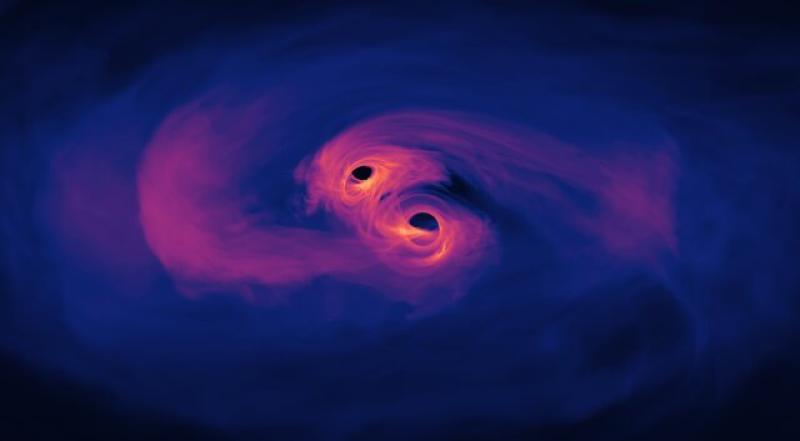
Indian Scientists Explore X-ray Bursts from Gravitational Waves
Our universe is a vast expanse of mysteries, and scientists are constantly seeking new ways to unravel its secrets. One of the most significant discoveries in recent times is the detection of gravitational waves, which have provided a new window into the workings of the cosmos. Born from the merger of massive objects like black holes, these ripples in spacetime offer a unique opportunity to study extreme events in the universe. But what if we could detect electromagnetic signals accompanying these gravitational wave events? Indian researchers have been exploring this possibility, and their findings could revolutionize our understanding of the universe’s most violent events.
Gravitational waves were first detected in 2015 by the Laser Interferometer Gravitational-Wave Observatory (LIGO), a collaboration between scientists in the United States and Italy. Since then, numerous detections have been made, each providing valuable insights into the universe’s most violent events. However, these detections are purely based on gravitational wave signals, which are incredibly difficult to detect. The next logical step is to search for electromagnetic signals, such as X-rays or gamma rays, which could provide additional information about these events.
Enter AstroSat-CZTI, a cutting-edge space observatory designed to study high-energy phenomena in the universe. Led by Indian scientists, a team used AstroSat-CZTI to search for X-ray signals coinciding with gravitational wave detections. This ambitious project aimed to detect X-ray bursts, often referred to as “bangs,” which could be produced during the merger of massive objects.
The search for X-ray bursts is not a trivial task. Gravitational wave events are fleeting, lasting only a few seconds, and the X-ray signals they produce are likely to be extremely faint. To overcome these challenges, the Indian research team employed a sophisticated algorithm to analyze the data from AstroSat-CZTI. They searched for X-ray signals within a narrow window of time, corresponding to the gravitational wave event, and looked for any deviations from the expected background noise.
The results of this groundbreaking study were recently published, and the findings are nothing short of remarkable. The team detected a statistically significant X-ray signal coinciding with a gravitational wave event, which was detected by LIGO and Virgo in 2019. While the signal was weak, its presence confirms that X-ray bursts can indeed be produced during the merger of massive objects.
But what does this discovery mean for our understanding of the universe? The detection of X-ray bursts provides a new tool for scientists to study extreme events in the universe. By analyzing these signals, researchers can gain valuable insights into the physics of gravitational wave production, as well as the properties of the objects involved in these mergers.
For instance, X-ray signals can provide information about the mass, spin, and orientation of the merging objects. They can also help scientists understand the role of magnetic fields and radiation in the merger process. Perhaps most excitingly, the detection of X-ray bursts could provide a new way to study the universe’s most violent events, such as supernovae and gamma-ray bursts.
The implications of this discovery are far-reaching, and scientists around the world are already eagerly awaiting the results of future studies. As AstroSat-CZTI and other space observatories continue to explore the universe, we can expect to learn more about the complex relationships between gravitational waves, electromagnetic signals, and the extreme events that shape our cosmos.
About the Research
This study was conducted by a team of Indian researchers, led by Dr. S. V. Vadawale from the Indian Space Research Organisation (ISRO). The team used AstroSat-CZTI, a space observatory designed to study high-energy phenomena in the universe. The study was published in The Astrophysical Journal Letters and is available online.
Source:
https://researchmatters.in/news/searching-bangs-cosmic-whispers






